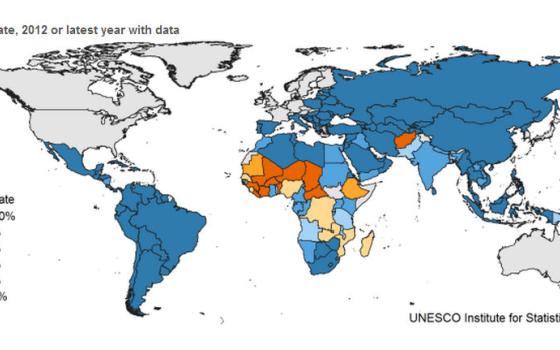September 17, 2014
In 1990, only 76 percent of the world’s adults could read and write. But with concerted efforts, global literacy has been on the upward swing. In 2013, the UNESCO Institute for Statistics published its literacy projections for 2015 based on data from 151 countries in the Middle East, Asia, Europe, Africa, Latin America and the Caribbean.
According to the data:
- Many regions have already achieved near universal youth literacy. However, growth in the literacy rate is still expected, with 92 percent of the world’s children expected to be literate in 2015.
- The adult literacy rate has increased consistently since 1990 and it’s projected that in 2015, 91 percent of adults will be literate. With the exception of Central and Eastern Europe (where the literacy rate will drop by half of a percentage point), every region in the world is expected to see literacy growth.
- Women still lag behind men in terms of literacy. Only three regions (Central and Eastern Europe, Central Asia, Latin America and the Caribbean) are projected to have as many literate women as men in 2015. However, the increase in women’s literacy rate is outpacing that of men in regions where women’s education has traditionally been undervalued. For example, between 1990 and 2011, women’s literacy rate in the Middle East increased 27 percent as compared to 17 percent for men.
These UNESCO maps show the most and least literate countries around the world today.
Image

